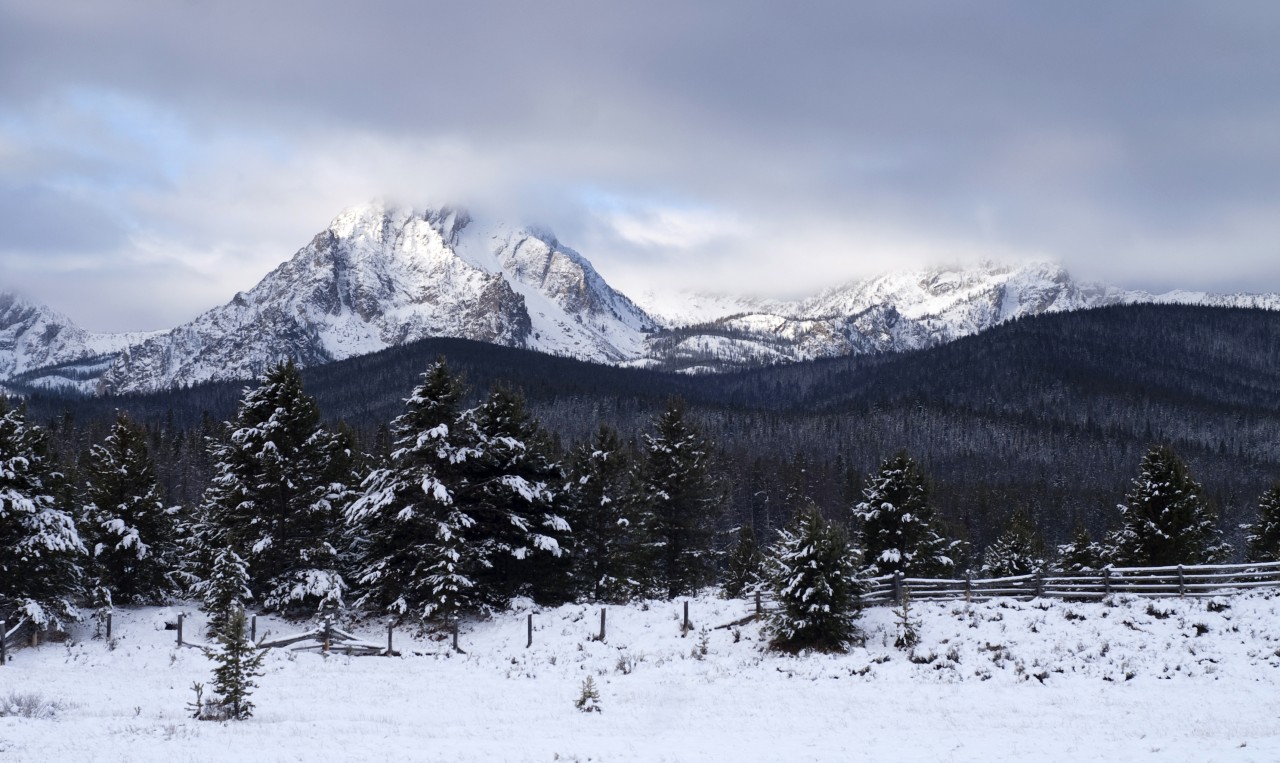Identifying animal tracks in the Sawtooth snow
A winter walk through the Idaho Sawtooths is a great way to see amazing scenery and perhaps some wildlife- or at the least, signs of animals in the form of tracks in the snow. With a little practice, you can easily begin to not only distinguish between a snow plop (snow that falls from tree limbs) and actual animals that make this Idaho wilderness their home.
Below are some descriptions of wildlife tracks common in the Idaho Sawtooths. Check out apps, books, and even local experts in our area providing guided snowshoe excursions for identifying tracks.
Avian or Mammal?
First, you will need to determine if the tracks are avian or mammal. Look for the imprints of feathers and/or the distinctive narrow three toes forward and one back characteristic of perching birds like chickadees or members of the jay family.
Mammals
If you determine they do not belong to a bird, look closely to determine which mammal made them.
Carnivore (meat-eater)
Canidae (dog-like)
If claw marks are present, it’s most likely a wolf, coyote, or fox. If there are also human tracks nearby it’s most likely a domestic dog. An X-shape between the paw pads will also be visible.
Wolves
Wolf tracks are about 5 inches long by 4 inches wide, with four symmetrical toes, evident claws, and a single lobe on the front of the footpad.
Coyotes
Typically run or walk in a straight line, with each paw print almost directly in front of the next and with few meandering lines. Domestic dogs, on the other hand, aren’t as worried about conserving energy, so they wander all over the place. Their tracks are half the size of wolves.
Fox
Fox tracks can be similar to coyote tracks, although they are typically smaller (2-3 inches long) and daintier. Another way to distinguish fox tracks is by the clarity of the print. In winter, red foxes grow thick fur on their feet, which can blur their tracks considerably. You might also spot pounce marks in the snow where a fox dove under the surface to catch its prey.
Feline (cat-like)
Arch-shape is visible for the mountain lion, lynx, or bobcat.
Mountain lion
Prints are often mistaken as dog prints. However, there are a couple of key differences. Mountain lion tracks are rounder and usually don’t leave behind claw marks as dogs do. Mountain lions have wider spaced toe prints. They rest above a trapezoidal foundation, adorned with a three-scalloped base. Like humans, mountain lions’ toes often slant, indicating right from left. You can estimate the size of a cat by its middle-toe track.
Lynx
The lynx leaves roundish paw prints typical of felines. It has four toes, which are visible in the tracks. The digital pads of the lynx look small and round, and sometimes they even resemble elongated fingertips. The paw print of the lynx is not symmetrical in shape, as the second toe of the front paw sticks out further than the rest. When on the move, the lynx usually retracts its claws.
Bobcats
These cats feature four toes on each hind and front foot, which look like teardrops, the back paw looking a bit like a youngster might draw a fat, bubbly capital M.
Mustelid (weasel-like)
A weasel footprint has five clawed toes surrounding a V-shaped paw pad. Weasel tracks often wander from one rodent den to the next in search of food, stopping frequently to look for danger.
Ungulate (hoofed animal)
Deer
Their hind feet tend to step on top of their front tracks leaving distorted and confusing marks. In deep snow, even deer tracks can be tough to identify. They are often heart-shaped.
Elk
When comparing elk tracks with deer, elk come up longer, ranging from three to nearly five inches in length and around three inches wide. Though one hoof shows up as side-by-side, stretched-out ovals, it’s often difficult to make out two distinct front feet, due to the way they walk.
Lagomorph (rabbit-like)
Rabbits
These are very common. Repeating bound patterns with a group of 4 tracks will form a tall, thin rectangle or capital Y as the two front paw tracks tend to show up behind one another. A cottontail may leave a fifth imprint as the tail leaves an impression behind.
Rodent
Squirrels
They often have a bound pattern – a wide blocky pattern compared to rabbits. They often lead to a tree or other structure they can easily climb. Also, you will be able to distinguish 5-toed hind feet on the outside and 4-toed front feet on the inside. You might be able to make out long skinny toes.
Porcupine
You probably won’t see porcupine’s tiny prints in the snow clearly. It turns out the critters act like miniature snowplows-dragging their tails and plowing through snow, leaving fairly wide trenches. Look for five thin, long toes and heels much like a baby’s foot.




